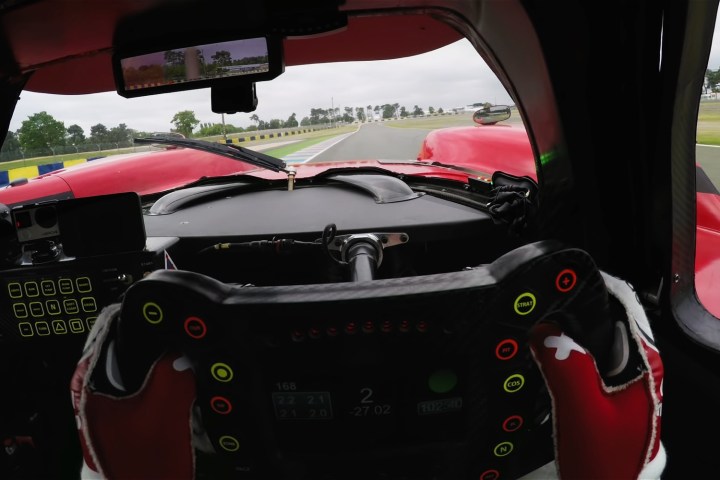
The carmaker worked with Gentex Corporation to design a “Full Display Mirror” system for the GT-R LM NISMO. It combines two conventional exterior mirrors mounted on the front fenders with a camera that captures video of what’s going on behind the car. It’s all integrated into one display for the driver. The setup was used at the 2015 24 Hours of Le Mans, and was probably one of the only things that worked in what turned out to be an embarrassing debut for Nissan’s hybrid racer.
Similar technology is already becoming available on road cars. the 2016 Cadillac CT6 features a streaming-video rearview mirror that feeds video from a rear-mounted HD camera to the mirror. It’s meant to eliminate obstructions like the roof pillars and passengers’ heads, and yields visibility equivalent to that of a convertible with the top down, Cadillac has said.
Rearview cameras have begun to supplant mirrors in everyday use, a trend that will likely continue as federal regulators look to mandate cameras for all new cars. However, regulations may also ensure that mirrors are not completely replaced by cameras. Early in the development of its Model X crossover, Tesla lobbied to allow cameras to replace side mirrors as a way to improve aerodynamic performance. Several other carmakers seemed intrigued, but regulators did not like the idea.
The Model X is going into production with conventional mirrors, and the Cadillac CT6’s streaming video can be turned off. While race teams are bound by rules that are equally strict in their own respect, sometimes it’s easier to get certain technologies onto the track than onto the street. After all, it’s not like Nissan’s drivers have an alternative.


